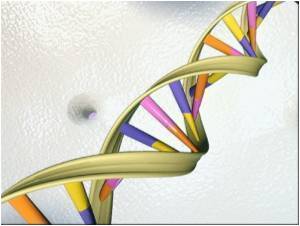A gene variant to explain why Latin Americans are at higher risk of Type 2 diabetes has been discovered by scientists.

A research consortium called SIGMA -- for the Slim Initiative in Genomic Medicine for the Americans -- sought to understand why Type 2 diabetes in Mexicans and other Latin American populations is roughly twice as great as among non-Hispanic whites in the United States.
They carried out a DNA comparison of 8,214 Mexicans and other Latin Americans, who were divided into diabetics and non-diabetics.
Those with the SLC16A11 variant were around 20 percent likelier to develop the disease compared to counterparts without this signature, they found.
Prevalence of the variant was especially high among people of full Native American ancestry, of whom around 50 percent had it. Among Latin Americans generally, it was 30 to 40 percent.
A comparison with other ethnic groups found the variant in around 11 percent of East Asians, but rare among Europeans -- two percent -- and absent among Africans.
Advertisement
"The haplotype (genetic variant) derives from Neanderthal introgression, providing an example of Neanderthal admixture affecting physiology and disease susceptibility today," it said.
Advertisement
An investigation published last week in the journal Nature found that Neanderthals contributed between 1.5 and 2.1 percent of the genome of humans today.
The exceptions are Africans, who do not have a Neanderthal component in their DNA, it said.
That probe also found that Neanderthals passed on a small part of their DNA to another group of early humans, the Denisovans.
They in turn left a discernible genetic imprint in Australian Aborigines, New Guineans, ethnic Han Chinese and Native Americans.
According to the World Health Organisation, 347 million people worldwide have diabetes, a chronic disease that occurs when the pancreas does not produce enough glucose-controlling insulin, or when the body cannot efficiently use it.
Over time, the disease can damage the heart, blood vessels, eyes, kidneys and nerves -- increasing the risk of heart disease, kidney failure, stroke and blindness.
Type 2, also called adult-onset diabetes, accounts for around 90 percent of diabetes cases.
It is strongly associated with obesity and lack of physical exercise, which may enhance genetic predisposition to the disease.
Source-AFP











